Agustina Bottoni: Emotional Explorations in Design

For Agustina Bottoni, design is about emotional evocation. Combining small-scale craftsmanship and personal experimentation, Bottoni has created a diverse portfolio of furniture, textile and industrial products that take inspiration from Milanese architecture, nature and practicality. Her objects reimagine contemporary living – creating utilitarian and sculptural pieces that appeal to the sensitive amongst us.
Originally from Buenos Aires, Bottoni received her BA in Fashion Design at the Universidad de Buenos Aires and her MA in Design at the Nuova Accademia di Belle Arti Milano. With a keen eye for aesthetics and evocative concepts, Bottoni’s background in fashion enhances the shapes and designs of her current works. Bottoni’s practice shifted into product design as a more sustainable creative outlet that could enact positive experiences in people’s lives.
FRONTRUNNER spoke with Bottoni about the evolution of her work, boundaries to reimagining traditional household products, and how the pandemic has forced us to all slow down and focus on our craft. Her works are exhibited at international design and art institutions, such as Triennale di Milano, London Design Fair, Salone del Mobile & Maison et Objet.
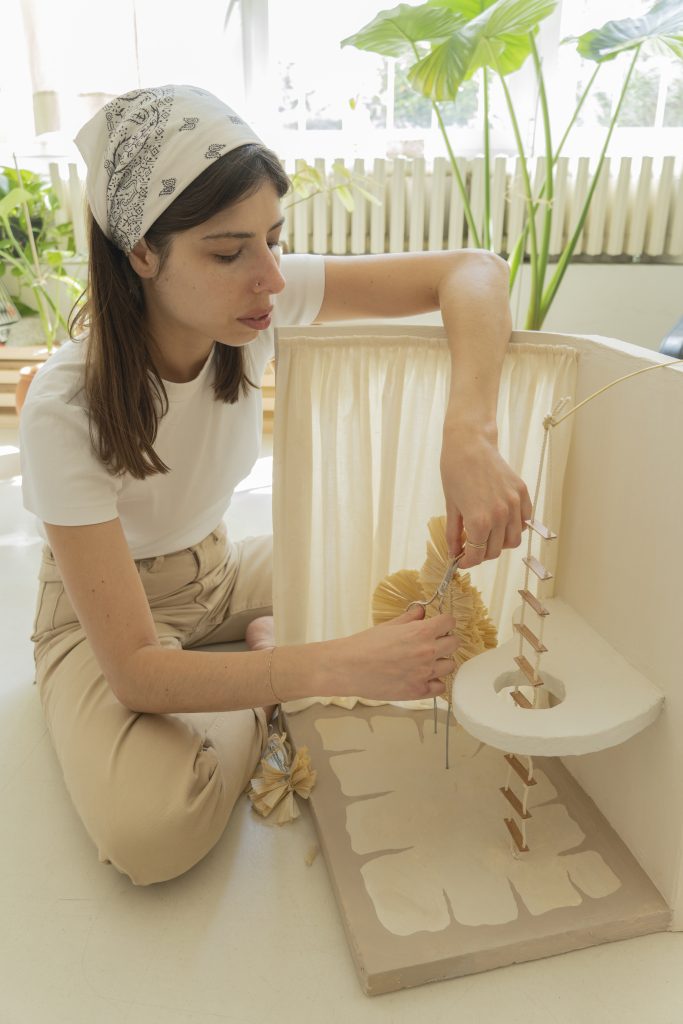
Tell me about how you got started as a designer. I know that you worked in fashion previously in Buenos Aires. What propelled you to begin your design career in Milan?
Okay, well, this happened… it must’ve been like 10 years ago, probably when I had a strong interest in design in general. Working in the fashion industry, I was still feeling the need to develop something, you know, to try different techniques, to explore new shapes, but also maybe create something that would last a bit longer. We were in the moment of fast fashion, I was working pretty much on that. I was not feeling that I was using my creativity in this way, even though I love fashion, I will always love it. So, yeah, I needed to explore and create something that would last a bit longer. I was lucky enough to get a scholarship in Milan, at the Nuova Academy di Belle Arti for my master’s degree. Pretty much from that moment on, I worked mainly abroad. This time opened me to other ways of doing design. It was amazing.
So tell me about your general approach to design. What are the main things that you consider in your creative process, and how do you find inspiration – especially because you make so many different objects?
It’s true that I make very different things. I haven’t stuck with a special/particular technique and I like that, because I love to explore what design can offer. But what I can say my things have in common is the way I approach the project. I would say there’s always a strong element of research. I dig into my personal archive of stuff that I’ve been collecting from all my experiences in my travels, but also architecture, art, and nature as well as my influences. What I think is what connects most of my work is, I would say I try to make my objects to have an impact in our lives that is positive. I think this is one of the most important things for me, that these objects in general have a huge impact in our lives. I mean, they really shape our environments and our lives. And so I really think of them so that they can be our companions. I think this is very important for me.
Your works have been exhibited at a lot of international venues like the London Design Fair, but they’re also very practical for everyday use. Do you think that your designs cater to a specific audience or, perhaps, to a particular use or setting?
Well, I think not all of my projects are, say, particularly very functional. I mean, some of them of course, because they’re meant to be used. But on the other hand, I also made some objects that are more sculptural, like, for example, my Melodicware Series. We’re talking about sculptures. I mean, they’re not the typical function of an industrial design product, but I think they still have an incredible function. These pieces are in my studio, in my house, and every day, the sounds that these sculptures make really soothes my senses and really, really relaxes me. I think this is also something that’s a function that we must have to make our lives better. And this can mean so many things. Sometimes it’s something that has to do a bit more with the emotional side, right? I think this is an aspect that I put a lot into in my projects. Definitely the person who is into these kinds of designs has to be, you know, sensitive.
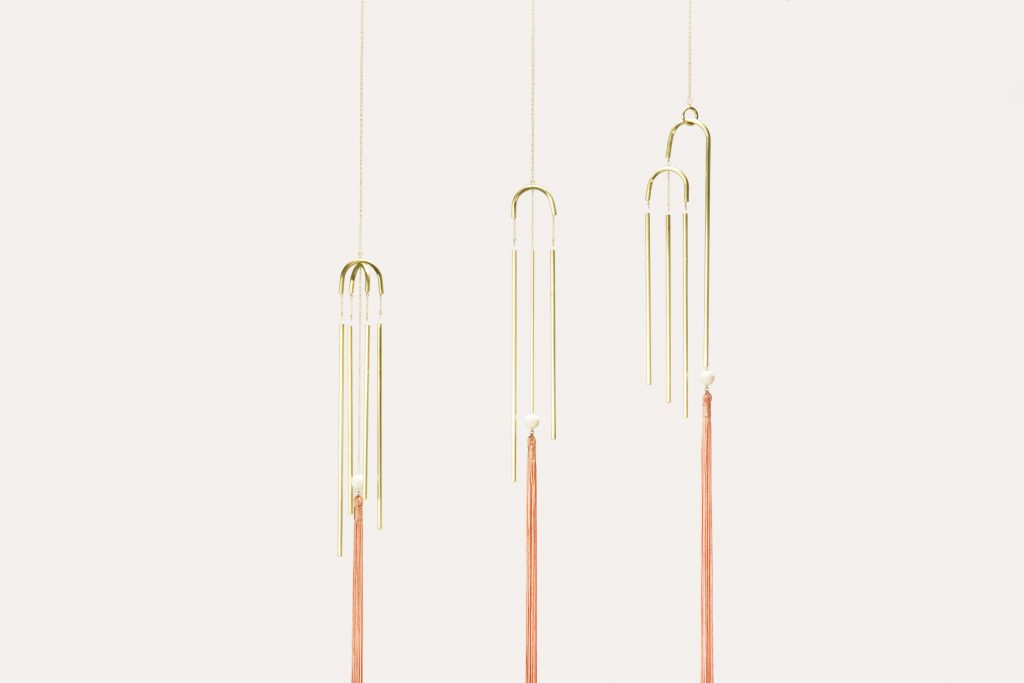
With works like your Melodicware series or your Eden series, they’re sculptural and there’s a clear reimagining of a traditional product. How do you push this boundary and challenge yourself to innovate these kinds of objects?
Well, it’s definitely a hands on project/process, especially in these kinds of series that are very sculptural. I also deal with space; we’re talking about like kinetic sculptures, things that are moving in space. So it’s definitely a very empiric process, a very trial and error process, and I was also on a learning curve because I needed to test every piece and see how they felt. It was very rewarding, because it definitely was testing something that didn’t exist yet. It was not only about shape, it was also a lot about how things feel, how they sound, how they move. So I think it was an exercise in design. It was very interesting.
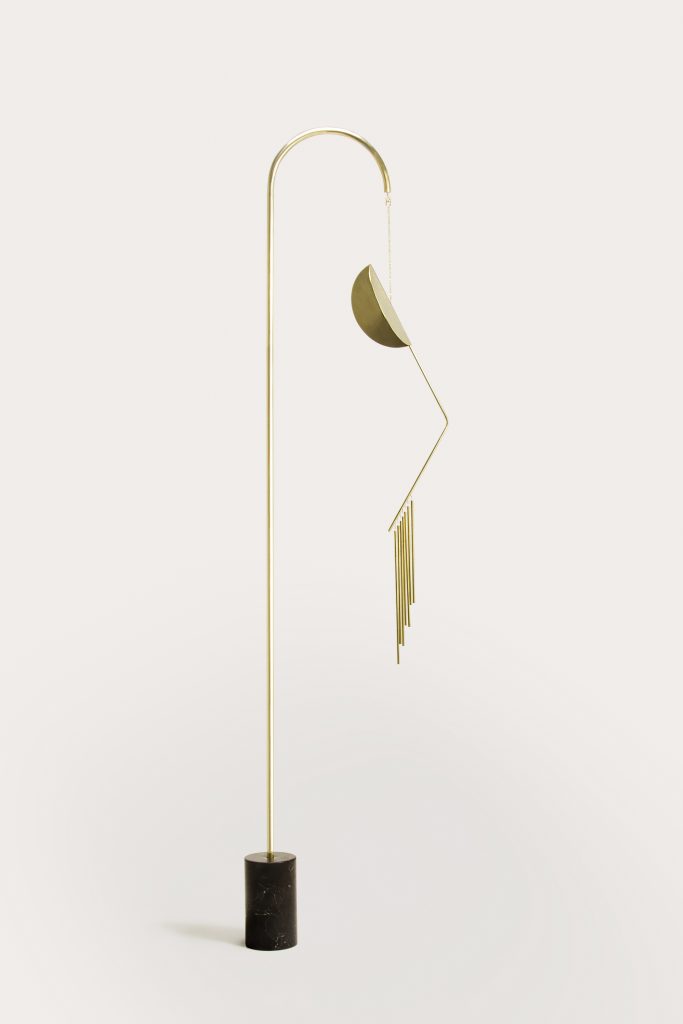
My personal favorite of your designs is the Calici Milanese, the glassware collection.
Well, yeah, I think that most people agree. I think what’s interesting about these glassware pieces is that people really connect with them. There’s something about the shape that invites people to have happy thoughts. It’s definitely something that’s very visceral, very immediate about a happy moment, a celebration of indulgences. This resonates a lot with the times, especially now that people really need all the help we can get to think of good moments. For me personally, it’s amazing to be able to reach peoples’ emotions this way and to reach peoples’ houses and special moments. It’s very rewarding.
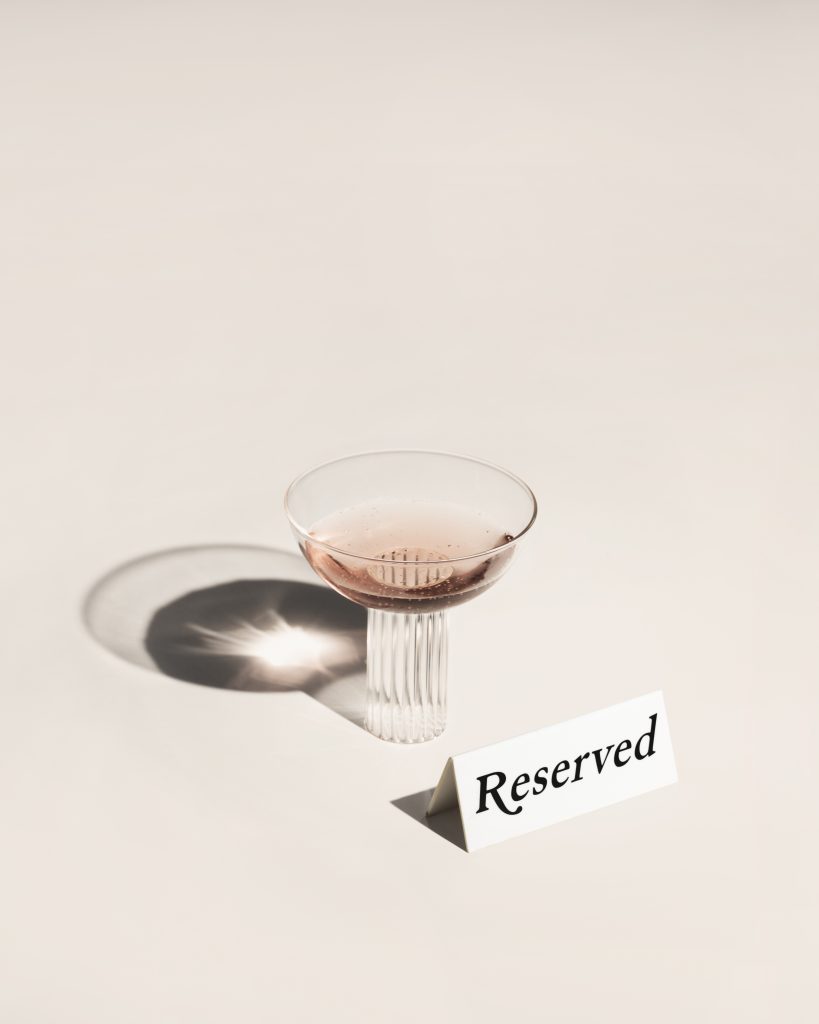
Calici Milanesi Champagne
I read on your website that this collection was inspired by 1930s architecture, do you mind elaborating on that?
Yes, there are some examples of this architecture in Milan, especially one amazing, beautiful, lavish place in the city center that was key. It was a villa for a very wealthy family back in the days, and it was made by an architect. I mean, it’s the perfect example of elegance and luxury, and it’s very definitely all over the place. It has very striking shapes, what would be something like “art deco” here in Italy. So definitely that inspired me, because when I think of a very luxurious place here in the city, that house came to mind and those shapes, those arches and the rich use of materials, all these lavish concepts came to mind when creating this glassware line.
I thought another interesting part about the glassware line is that they combine both form and function because they’re obviously very beautiful, and they are also thermal shock resistant and dishwasher safe. How can you find this line between aesthetics and functionality in your other objects?
I mean, there is a balance. I also think that I have a small studio, I am a small business. So I have decided to produce my products with local craftsmen, for example, so we’re always talking about small production. In this scheme of production, it’s very important to really think of the value. I mean, we’re not producing on a large scale. We’re producing small. So we really have to have something that is special for someone to really invest in these pieces, right? I think a lot of them do have a lot of value, the value of someone making these by hand, the value of having like a very sculptural or striking shape that pleases the senses. Information has to be there, of course, because we really need to think about reality. People in the end… want to have these things around every day. I really feel that it would be nice also to be able to reach more people with my designs. But certainly it’s not so much so because well, like I said, it’s always more small… the way we look at our designs, but it’s my choice.
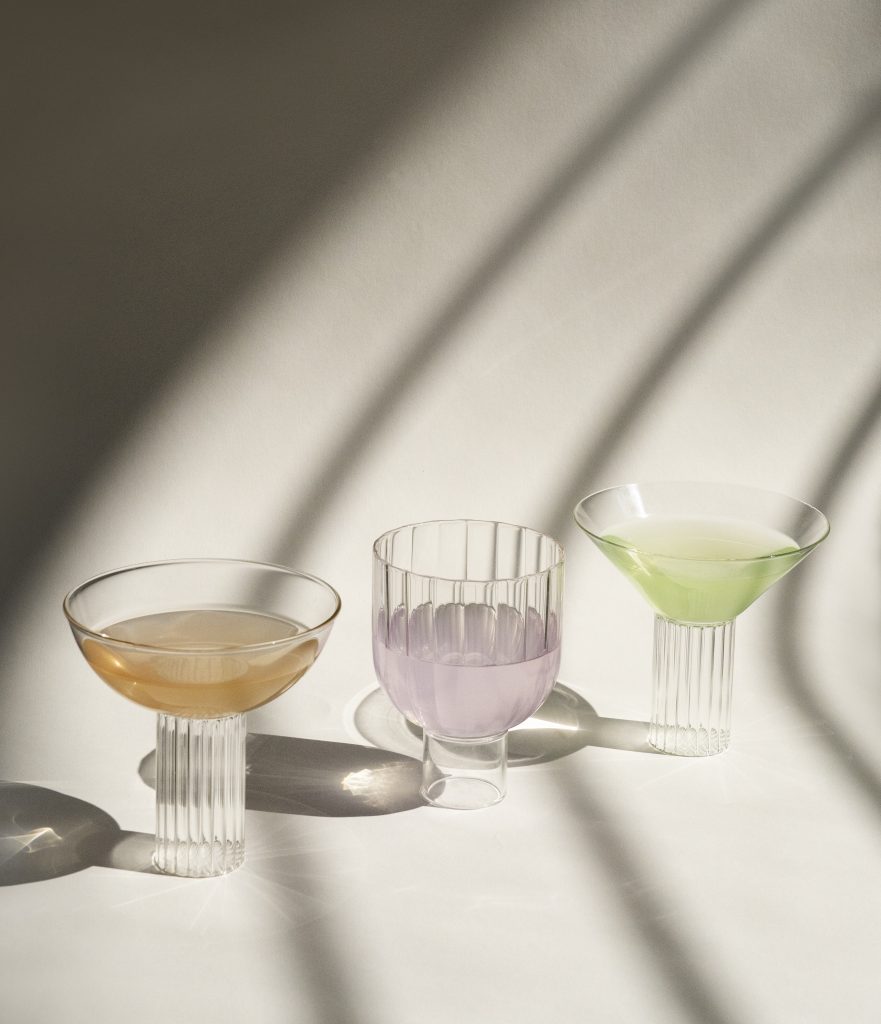
Photo credit: Roberto Niño Betancourt
In terms of scalability – because I know that you have your own studio and in the past you’ve also done commissions and worked with bigger companies – can you tell me about the difference in those kinds of design experiences, how the objects that you design freelance in your own studio differ versus commissions?
My studio is practically split between my freelance work and work for commissioning projects, for companies, etc. My small productions are things that – projects that I choose to share with the world, say things that I have tested at home and I love to have and my friends like when they come over. So these are the kind of things that I decided to put out there in the world for myself. When I work with companies, it’s a lot about trying to find a common ground and to see which values we share. And if we can communicate and develop these in the projects, then it’s also very fulfilling. I actually like this line of my work a lot because also, sometimes working for a company can be also very challenging, but it can also open so many new possibilities and different scales and the possibility to arrive to more people and to also to develop more complex ideas as well. So this is definitely very important. I do some consultancy, and I really appreciate when companies actually want to ask me to put my sensibilities into a project that is going to be maybe in a large market. So that’s really cool.
What do you think your biggest challenge has been so far in terms of a collaborative effort with the company?
Well, I should say that especially here in Italy, there is a lot of difficulty in giving proper value to the work of creatives. This happens a lot. I mean, it’s a very pervasive theme in our industry, that companies sometimes are not willing to pay what is fair to you, to young designers, especially when we are starting out. There’s also this whole culture of unpaid internships and pro bono projects, it’s something to watch. So that’s a big challenge that we have, because these also create something that is very serious and it can create a lack of diversity in the industry as well, because a lot of people, maybe they cannot go through the long process of being established and finally make a living by doing design.
Of course. This kind of ties in with the idea of equal opportunity – you have a design collective called The Ladies Room, which you co-founded. Do you mind telling me about it?
Yes. We’re actually very proud of our collective, the Ladies Room. We are four designers. It’s the site of the studio that everyone can meet in. We have been working together since 2016 and it definitely started a bit… I mean, by accident, I wouldn’t say, but we really started by saying OK, let’s share our next exhibition together to split costs and everything. This was an exhibition in 2016 in Torino. In this exhibition room, somehow – without really pushing it – we realized that we share that sensibility, even though we have very different styles. We realized that it had much potential to continue further and actually to do projects together with this dialogue that we are constantly finding when we get together. So, afterwards we started to create projects together, installations for galleries, events and collections, et cetera. And yeah, I mean, it has been amazing because not only have we found a successful way of collaborating, which is also very challenging, of course for creatives it’s not easy. But it has been very great. Also, we like to fight against the idea that, you know, sometimes these collectives are short-lived; this happens a lot, that collectives come and go. And also the idea that maybe egos will bring fights and difficulties. You can go through and overcome all these things because we believe in dialogue. The kind of ideas that we put together is not the same as the work each of us does individually. So, it’s beautiful to be able to create something with four minds and I think we support each other as well, like colleagues and friends. We have created this beautiful community of support for each other. I’m very, very proud of it.
I think it’s great to have a place for women to kind of collaborate together in any sort of industry. On another note, how do you think your practice has been shaped by the pandemic? The pandemic initially kind of found its footing in northern Italy – There was a large outbreak there when it first began in March 2020.
Yeah, definitely. I mean, at first it was very much focused here in Italy and it has shaken the whole industry. But Italy especially because, well, for example, Salone del Mobile had to [close] because of it. And this year, it’s still not a sure thing. But for me personally, professionally, it has been a time of putting together projects without the pressure of this design calendar that was already very hectic. Before we had fairs like every two weeks or less. I think all this crazy scheduling was really dictating projects, that maybe were not as thoughtful or were not sustainable or realistic. There is a positive way of looking [at it], at least I hope. I hope we become more responsible, the industry becomes more responsible. I think for me it has been an opportunity to have more time to develop projects as well, and to lose some of the pressures that this constant array of fairs have on creatives. Because sometimes I think it was definitely too much. It’s a very big transformation. The industry has its designers who have been hit hard economically, definitely. I come from Argentina, so we are very used to economic crises. I think what we can do is to look forward and see how we can be better.
Of course, that’s a good way to look at it. Speaking of looking forward, what does the future hold for your studio and for your designs?
Well, I’m very excited; I’m currently working on some projects that I want to do for myself. I mean… maybe this also has to do with the pandemic, but I’m feeling more free to start projects that I believe in without the pressure of the outside. So I’m looking forward to the more artistic projects I carry on my own and think “This is very interesting for me.” I think also some interesting collaborations with companies are in the future as well. I’m happy that some things are moving along, even though in this complicated climate, there are still some nice partnerships happening, and it’s good. There are ups and downs but I guess not all doors are closed.
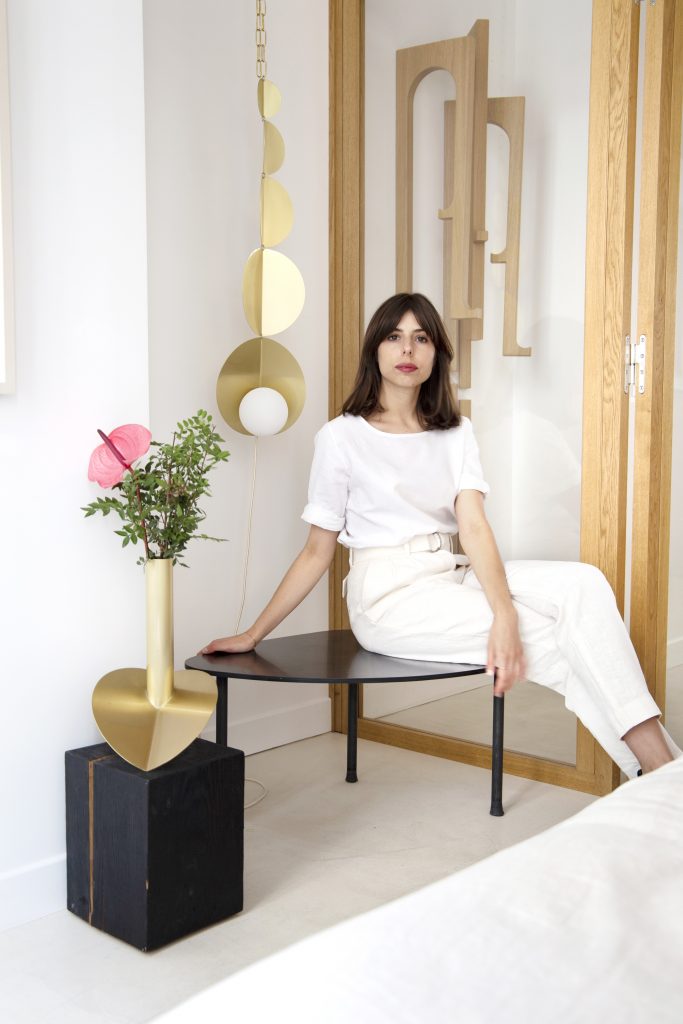
Responses